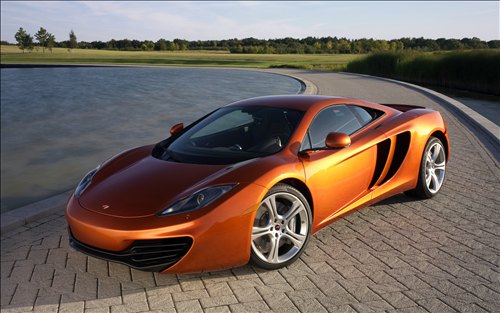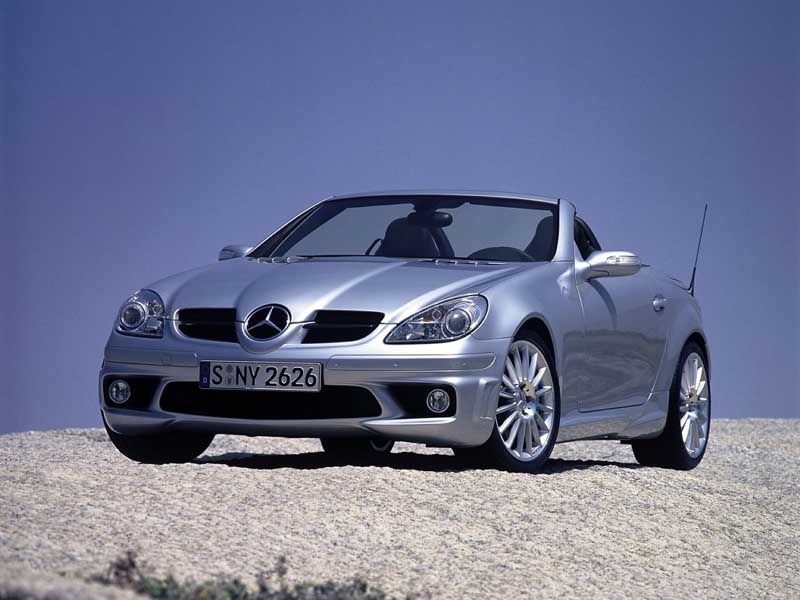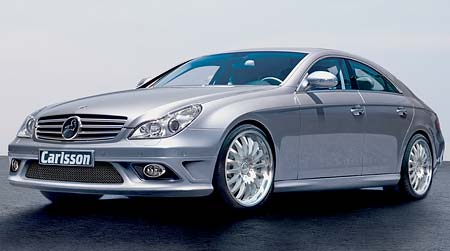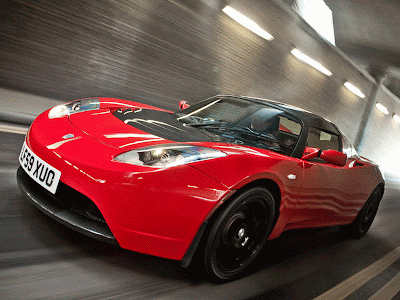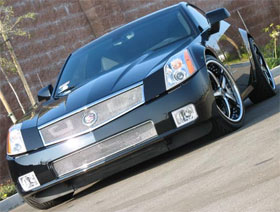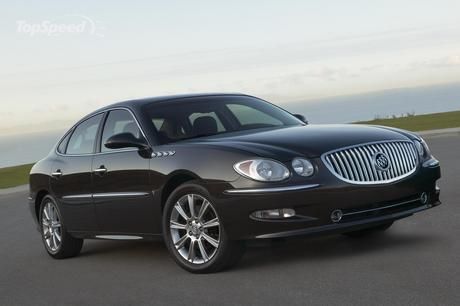Friday, January 30, 2009
Vídeo para a nova concepção da BMW
2009 Chevrolet Cobalt XFE
Chevrolet Cobalt XFE
| Base Price | $15,670 |
| Vehicle layout | Front-engine, FWD |
| Engine | 2.2L/155-hp/150-lb-ft DOHC 4-cyl |
| Transmission | 5-speed manual |
| Curb weight (dist f/r) | 2780 lb (mfr) |
| Wheelbase | 103.3 in |
| Length x width x height | 180.3 x 67.9 x 55.7 in |
| EPA city/hwy fuel econ | 25 / 37 mpg |
| MT observed mileage | 24.4 mpg (combined city/hwy) |
| CO2 emissions | 0.66 lb/mile |
2009 Cadillac CTS-V views and specs
2009 Cadillac CTS-V
| POWERTRAIN/CHASSIS | ||
| Drivetrain layout | Front engine, RWD | |
| Engine type | Supercharged 90 deg V-8, alum block and heads | |
| Valvetrain | OHV, 2 valves/cyl | |
| Displacement | 362.1 cu in/6162 cc | |
| Compression ratio | 9.0:1 | |
| Power (SAE NET) | 556 hp @ 6100 rpm* | |
| Torque (SAE NET) | 551 lb-ft @ 3800 rpm* | |
| Redline | 6200 rpm | |
| Weight to power | 7.7 lb/hp | |
| Transmission | 6-sp automatic; 6-sp manual | |
| Axle/final | 3.23:1/2.16:1, auto; 3.73:1/2.35:1, man | |
| Suspension, front; rear | Control arms, coil springs, adj shocks, anti-roll bar; multilink, coil springs, adj shocks, anti-roll bar | |
| Steering ratio | 16.1:1 | |
| Turns lock-to-lock | 2.8 | |
| Brakes, f;r | 15.0-in vented disc; 14.7-in vented disc, ABS | |
| Wheels | 9.0 x 19-in; 9.5 x 19-in, forged aluminum | |
| Tires | 255/40R-19 96Y; 285/35R-19 99Y Michelin Pilot Sport PS2 | |
| DIMENSIONS | ||
| Wheelbase | 113.4 in | |
| Track, f/r | 61.8/62.0 in | |
| Length x width x height | 191.6 x 72.5 x 58.0 in | |
| Turning circle | 37.9 ft | |
| Curb weight | 4281 lb (auto), 4292 (man) | |
| Weight dist., f/r | 54/46% (auto); 53/47 (man) | |
| Seating capacity | 5 | |
| Headroom, f/r | 38.8/37.2 in | |
| Legroom, f/r | 42.4/35.9 in | |
| Shoulder room, f/r | 56.7/57.4 in | |
| Cargo volume | 13.6 cu ft | |
2008 Cadillac CTS Specs and Views
2008 Cadillac CTS Specs
| Months/miles in service | 8/11,442 |
| Avg econ/CO2 | 17.2 mpg/1.13 lb/mi |
2008 Buick LaCrosse Super Views
2008 Buick LaCrosse Super Specs
| Base price | $32,605 |
| Vehicle layout | Front-engine, FWD, 5-pass, 4-door, sedan |
| Engine | 5.3L/300-hp*/323-lb-ft* OHV 16-valve V-8 |
| Transmission | 4-speed automatic |
| Curb weight | 3800 lb (mfr) |
| Wheelbase | 110.5 in |
| Length x width x height | 198.1 x 73.0 x 57.4 in |
| 0-60 mph | 6.0 sec (MT est) |
| EPA city/hwy fuel econ | 16/24 mpg |
| CO2 emissions | 1.03 lb/mile (est) |
Vídeo Porsche 911 GT3
Fonte comunidade Stuttgart Porsche do orkut
Thursday, January 29, 2009
Land Before Time: 2 Football

Wednesday's football flashback was only the beginning. Here you have the apex and the end of this phase in pre-Darko. Click on it to magnify and read. One time at a party in Philly, some guy told me he'd had this work blown up and framed for his living room. I had to rip this out of my only copy to scan it, thus possibly destroying my memorable essay on Their Satanic Majesties Request.
Don't forget to read this oath from yesterday, or my surprisingly wild interview with Clyde Drexler. And to dude who told me at Varsity Letters about his series of DIY All-Star songs, PLEASE GET IN TOUCH!!!!
Post MUST Be Called "The No More Drama Club"

Major TSB grind today, includng an entertaining interview with Clyde Drexler and some Rookie/Sophomore thoughts. Stay tuned to there.
One of the reasons I hate our book now is that, as I've said several times already, it seems like this season has brought about a subtle-yet-dramatic shift in the NBA. Kobe suddenly became an elder statesman instead of a lightning rod; the 21st century draft classes now rule the roost; a number of younger players have taken their ever-improving games into the All-Star waiting area; and, as one commenter put it, "a generation of good-not-great players" has slipped into irrelevance, gracefully receded, or seen their stories wrapped up with little room for protest. I'm working on a revised table of contents for a (purely hypothetical) 2009-10 Almanac, and it pretty much involves a complete and total overhaul.
But underneath all this is another trend, one that while possibly accidental is certainly worth noting. When pressed to break up recent NBA history into epochs, I'd go with the 1980's/early 1990's Golden Age, then the post-Jordan era, which overlaps the beginning of the Iverson era and then lingers on through it like a ghost with tenure. I'd thought that the period FD has existed through was somehow post-Iverson, where style and identity co-existed with empirical results and make others feel safe. Like the equilibrium the dress code has settled into. In fact, that's the dualism that drives most of the book's profiles, the tension between swaggering inviduality and the need to fit into a viable, and marketable, version of basketball.
This season, it seems like we're entering a new era, one where the sky is patroled by utter professionals with a strong aversion to inner turmoil. We're not just seeing players with simple narratives take over; a lot of them seem way lacking in any kind of narrative, or personality-driven dynamism. In the book, Dr. LIC took Duncan's non-ness as the ultimate enigma; the Recluse found Joe Johnson compelling because he yielded so little that was distinct apart from his game, if even that. Compared to Johnson, Duncan—boring, mordant, mysterious, vacuous—might as well be Kobe Bryant. The new NBA is at peace, resolved, and if not muted, then certainly a place where the rhythms of craft tamp down man and his problems, instead of the latter animating the former. The game is becoming a Platonic ideal (you know I meant it if I make a fucking Plato reference), not a violent three-headed dialectic of self, world, and pastime.

Who are the names we recite this season? LeBron James, otherworldly but impenetrable; Dwyane Wade, a game possessed but a man forever at ease; Chris Paul, a nice guy with a mean streak in competition; Dwight Howard, the goofy big man whose excessive popularity has everything to do with him being one of the league's few fonts of personality, or personality/professionalism tension. Dirk and Chauncey, older dudes who have always been at odds with the NBA's culture of dissonance. Duncan, who in this context comes off as imperfect, and thus enthrailling, pre-history. The aforementioned Joe Johnson, the standard-beared for a new group that includes Brandon Roy, Danny Granger, Al Jefferson, Devin Harris, Jameer Nelson, and David Lee. Even the top rookies, Derrick Rose and O.J. Mayo, are in part being praised for their maturity and level-headedness. Professionalism may not have sublimated swagger, but it's certainly well on its way to sublimating it at the expense of—or perhaps in place of—the trials of the self.
There is perhaps no greater evidence of this unexpected shift than the rise of Kevin Durant. Durant's mild-mannered off the court, but on it has a phantasmic bloodlust that's equal parts sneaky, vicious, and just plain mysterious. He's also the best small forward the West and yes, I agree with Simmons that he's the league's most underrated player. Watch him over a couple days. Not only does he look every bit the force he was at UT; gone are those quarters of nebulousness or frustrated jump-shooting. Durant goes to the rim stronger, faster and more insistent than we'd thought possible, while retaining all the sleek, slippery qualities that define his movements on the court. He rebounds, sometimes with a force bordering on outrage, and sets up teammates with tough passes. And on defense, there's determination if not always results, and feats that use his length to its fullest. What's more, Durant's gaining power (figurative, dudes, so maybe it should be "powers") every day, such that the improvement over a couple weeks is noticeable.
He's also now better than Carmelo Anthony, who while he may be the most complete offensive player in the game, and a far more committed rebounder and defender this season, is always subject to his passions. What's more, our perception of Melo, and his life in public, are always a function of the complexities surrounding his person, or persona. Melo is the epitome of post-Iverson, a player undeniably hood but trying to synthesize that with good basketball. However, there's no separation there, much less sports overtaking the rest of the world. And while I hate to say it, Durant's partly a better player because he's less distracted, his development less loaded, and his style full of details that warrant purely aesthetic (or technical) critique, rather than the kind of all-encompassing blather this site specializes in.
I fully acknowledge that Durant has not turned out to be a force for utter change. But perhaps even the meta-discourse of revolution and renewal is moot, at least for a while. This is an age of reconciliation for the NBA, with itself and its audience. Now is not the time to thrust forth radicals or make us deal with the madness of others, but the period when we take stock of what came before, consolidate and digest it, and as I said the first time I got all worked up about this subject, appreciate it.

Porsche 911 GT3
 Com previsão de lançamento para o Geneva Motor Show 2009, a Porsche não quis mais esperar e mostrou algumas fotos do novo 911 GT3.
Com previsão de lançamento para o Geneva Motor Show 2009, a Porsche não quis mais esperar e mostrou algumas fotos do novo 911 GT3.O motor que era de 3,6 litros foi para 3,8 ficando com 435 cv, não é nada oficial mas suspeita-se que ele terá injeção direta.
Clique nas fotos para ampliar




Só o controle de tração para domar o “Touro”
Wednesday, January 28, 2009
Táxi de Londres com 500 cavalos e mais um segredinho
Land Before Time: 1 Football
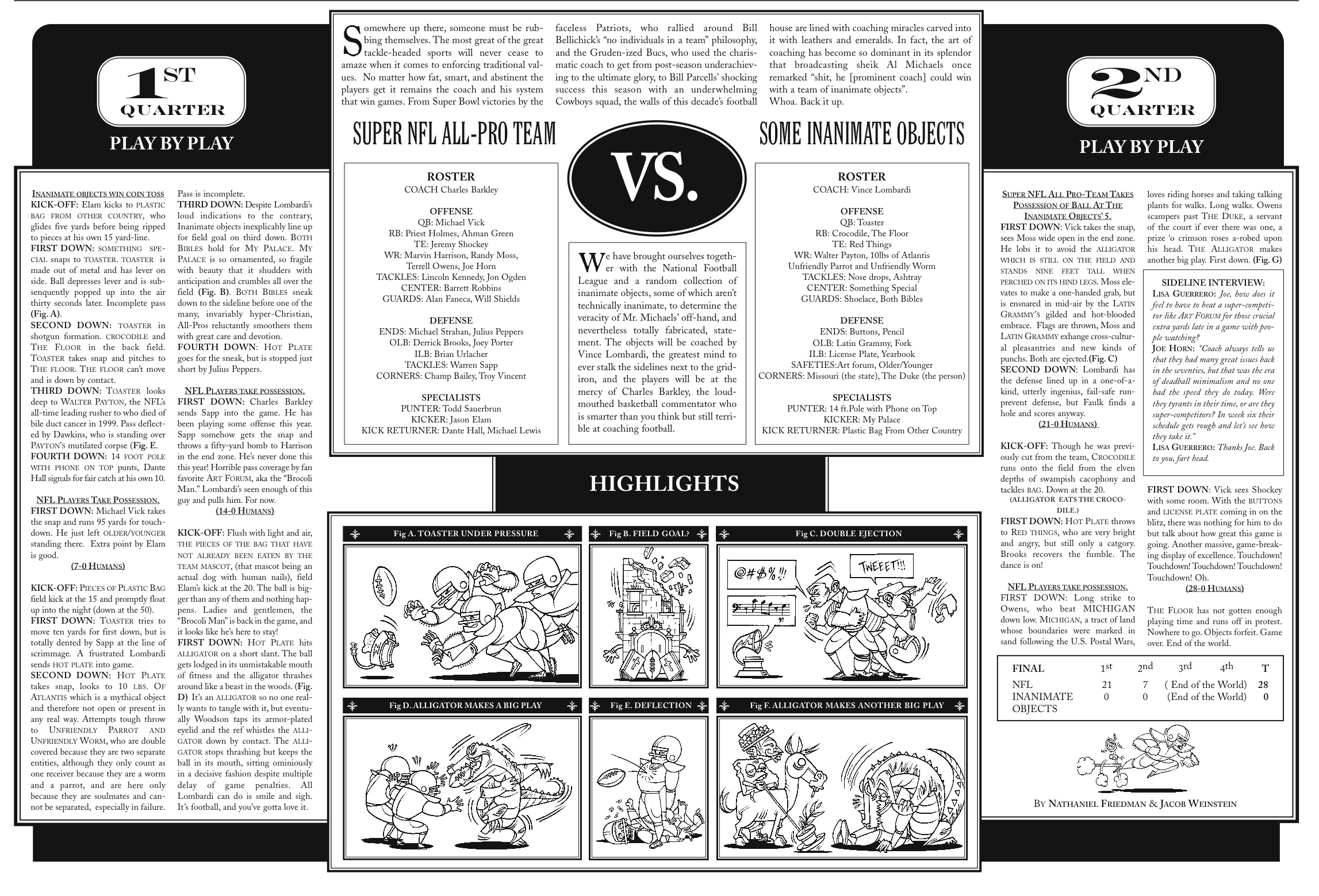
Way before FreeDarko was born, Big Baby and I used to do the occasionally sports-themed "column" for The Philadelphia Independent. In honor of the Super Bowl, here's one of them, about the NFL's best taking on a team of "inanimate objects." Click on it, it will grow, and then a magnifying glass will appear to aid your journey.
A few other items:
-FD now on Twitter. We don't quite know how to use it, I keep deleting things, and it's a lot less likely to sound right, but it's a nice distraction. And by all means, call us out for this stuff in the comments section right here.
-The Love of Sports interviews the double-oop team, and catches them in the act of another.
-I don't ordinarily recommend very young, very rough blogs that have nothing to do with sports, but anyone interested in politics should keep an eye on this one, by an old friend who also happens to be a true Movement OG. His first post may be about Obama and race, but there's new stuff there. Honest. I'm trying to help him clean up the look a little.
Tuesday, January 27, 2009
Bentley teases biofuel supercar
 Bentley will take a large share of the spotlight with the vehicle you see above. It has no name yet, and no technical specifics have been released, but what Bentley has revealed is that this will be the marque's fastest, most powerful production car yet.And while the fuel price is increasing from one day to another day,this Bentley Supercar will runs on biofuel. Visually, the grilles all have a blackout treatment, and sizable vertical intakes occupy the front bumper's outer edges. The hood also sports a pair of vents, presumably to help extract engine heat.
Bentley will take a large share of the spotlight with the vehicle you see above. It has no name yet, and no technical specifics have been released, but what Bentley has revealed is that this will be the marque's fastest, most powerful production car yet.And while the fuel price is increasing from one day to another day,this Bentley Supercar will runs on biofuel. Visually, the grilles all have a blackout treatment, and sizable vertical intakes occupy the front bumper's outer edges. The hood also sports a pair of vents, presumably to help extract engine heat.Given that the 600-horsepower/553-lb-ft Continental GT Speed currently owns the "most powerful production Bentley" title, look for more extreme ratings on this new, obviously Continental-based monster. As for the biofuel half of the equation, we expect to see an ethanol-drinking version of the twin-turbocharged W12 that propels the rest of the Continental range.
Source: Bentley
Bentley teases biofuel supercar
 Bentley will take a large share of the spotlight with the vehicle you see above. It has no name yet, and no technical specifics have been released, but what Bentley has revealed is that this will be the marque's fastest, most powerful production car yet.And while the fuel price is increasing from one day to another day,this Bentley Supercar will runs on biofuel. Visually, the grilles all have a blackout treatment, and sizable vertical intakes occupy the front bumper's outer edges. The hood also sports a pair of vents, presumably to help extract engine heat.
Bentley will take a large share of the spotlight with the vehicle you see above. It has no name yet, and no technical specifics have been released, but what Bentley has revealed is that this will be the marque's fastest, most powerful production car yet.And while the fuel price is increasing from one day to another day,this Bentley Supercar will runs on biofuel. Visually, the grilles all have a blackout treatment, and sizable vertical intakes occupy the front bumper's outer edges. The hood also sports a pair of vents, presumably to help extract engine heat.Given that the 600-horsepower/553-lb-ft Continental GT Speed currently owns the "most powerful production Bentley" title, look for more extreme ratings on this new, obviously Continental-based monster. As for the biofuel half of the equation, we expect to see an ethanol-drinking version of the twin-turbocharged W12 that propels the rest of the Continental range.
Source: Bentley
Cuidados com ar-condicionado do seu veículo
 Quando chega o verão é que muitos lembram que o carro tem ar-condicionado (ou como faz falta um ar-condicionado no carro) e ao ligar percebe-se que ele já não funciona mais como deveria. Especialistas respondem muitas duvidas que surgem a esse respeito. Veja abaixo:
Quando chega o verão é que muitos lembram que o carro tem ar-condicionado (ou como faz falta um ar-condicionado no carro) e ao ligar percebe-se que ele já não funciona mais como deveria. Especialistas respondem muitas duvidas que surgem a esse respeito. Veja abaixo:Tenho um Corsa 1.0 sedan 2000, quando ligo o ar tem um sistema tipo um rele que atraca e diminui o rendimento do veículo. O consumo de combustível aumenta usando o ar dentro da cidade e na estrada em torno de quantos por cento?
- Sidney
O consumo de automóvel aumenta com a utilização do ar-condicionado, mas o fator preponderante é a forma de condução. Se o motorista não imprime fortes acelerações, se não estica as marchas demais e não pisa no acelerador sem necessidade, o consumo vai ser menor. Quanto ao condicionador de ar, o seu compressor é ligado ao motor do carro por meio de correias, que por sua vez retira do motor algo em torno de 8 a 15 cavalos de potência.
O ar-condicionado do meu carro parece não resfriar o suficiente. Quando ligado, ele solta um ar gelado, mas não chega a ficar totalmente fresco dentro do veículo, principalmente para quem viaja no banco traseiro. Já troquei o gás e não resolveu. O que pode estar acontecendo?
- Eliane, Curitiba (PR)
A manutenção periódica do equipamento é que vai garantir seu correto funcionamento. No seu caso, leve o carro a uma empresa especializada em ar-condicionado e peça para fazer uma inspeção geral. Não basta completar o gás refrigerante, também é preciso verificar se não há vazamentos no aparelho.
Comprei um Palio ano 1999/2000, motor 1.0. Ele veio equipado com ar-condicionado, mas este ar não é de fabrica. Gostaria de saber se o carro fica comprometido com este equipamento.
- Cidney
O ar-condicionado é um equipamento em que a instalação não é recomendada fora da fábrica. Isso porque pode ocasionar diversas adaptações que, com o tempo, comprometem algum componente ou mesmo a durabilidade do equipamento. O mais comum é a infiltração de água no interior do veículo, além de problemas elétricos, já que conforme a adaptação, mesmo em concessionárias, pode ser utilizada peça paralela. Um bom exemplo é a correia do alternador, que também vai girar o compressor. Em algumas instalações fora da fábrica, a correia utilizada patina e não aciona adequadamente o alternador, que por consequência não carrega a bateria corretamente. O final disso tudo é que o motorista pode ficar na mão.
Com chuva, uso normalmente o ar e o desembaçador traseiro?
- Fernando Fortes
Exatamente. Em dias de chuva, o uso do condicionador de ar pode ser normal. Lembre-se apenas de alternar a saída do ar e direcionar para o pára-brisa por um determinado tempo e depois para o interior do carro. Fique atento quando a saída de ar estiver direcionada para o pára-brisa. Nessa posição o recirculador de ar fica desativado, assim, se estiver atrás de um caminhão, vai entrar aquela fumaça desagradável. Já o desembaçador só ligue quando o vidro estiver realmente embaçado. Alguns minutos depois desligue. Isso prolonga a vida útil do desembaçador traseiro.
O ar-condicionado possui varias faixas de temperatura, o consumo de combustível aumenta quando este está na posição frio máximo e diminui quando está no frio mínimo ou médio?
- Reginaldo Raposo
O uso do ar-condicionado aumenta sim o consumo de combustível, mas o compressor do ar-condicionado dos carros funciona de forma constante, de modo que, independente da velocidade escolhida, o consumo de combustível será o mesmo.
Fonte
Your Move(s): A Guest Lecture from the Joint Field of Science and Sport

A guest lecture from science professional Craig Cone, which shall confuse and delight us all.
Science is many things; useful is rarely one of them. Graduate level quantum mechanics is never of any practical use, treated by its students as a trial by ordeal rather than preparation for a professional career. That ends here, when it meets this site's earlier, admittedly crude, analysis of the alley-oop.
First, a devolution into an overly brief and facile derivation. When I fire a gun through a doorway, the bullet passes directly through the void way every time (duh). But if I am very small (one tenth the size of a human hair, for starters), firing a gun through a door causes insane shit happens. As the bullet passes through the door, it diffracts, creating a wave-like pattern of probability. Even less intuitive is the idea that that while fractions of the bullet are creating interference fringes forward, some fraction is coming directly backward.
This phenomenon cannot be interpreted with any form of classical physics. It actually perplexed science as a community for quite some time. Then, in the middle of the twentieth century, a scientist by the name of Richard Feynman proposed an idea hinging on path integrals as a unifying theory of dynamics. The theory states that there is a minimum energy path from point A to B, and that any deviation from the classical path has a penalty related to the deviation from the classical path. It contends that not only it is possible to calculate the deviation of any possible path, but that every possible path is being explored simultaneously (think back to the bullet example). The direct path from A to B, as well as the path from A to B through Dallas, are all occurring in calculable and observable ways. Repeated addition over all space-time is accomplished using a series of path integrals that eventually came to bear Feynman's name. While Feynman was initially treated like an escaped mental patient, he eventually ends up with a Nobel Prize and a lifetime's worth of bragging rights.
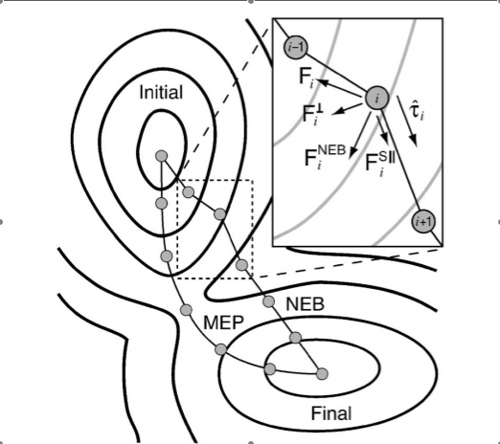
This brings us to basketball, specifically the fast break (an extreme version of any motion-based offense). As every middle school coach can diagram, there is a correct way to run one, and any deviation is showboating, an error of the highest degree that will result in a solid dose of pine-riding. There is a classical path from A (ball in hand) to B (ball in net); by observation, there is an infinite number of ways to get there. But according to Feynman’s path integrals, we can calculate the energy (everything is energy) of every single permutation. When even the threat of high energy play is of extra value—after all, swagger/style has functional value—suddenly there's a strategic use for this theory. A minor deviation involves a pass through the legs of the defender or whipping the ball behind the back. A higher-energy path is a pull up three or ally-oop, extra high-energy is the McGrady self ally-oop through traffic. If those are high-energy paths, then the high school clip posted last week from the high school game verges on truly profligate, as near to actualization of the A to B through Timbuktu metaphor as physically possible.
The Paul/Chandler combo became intuitive because it is both lethal and functional. As long as Talent(calc) <= Talent(pos) any action makes logical sense. There is no violation of basketball Tao, only the separation of dreams and physical reality, the broken chaff left on the threshing room floor. This is not some attempt to draw back the curtain to expose the gears of sport, only to then claim that the emperor is without clothes. Instead, what has been added is a qualitative method to appreciate the swag required to get from A to B by way of where ever.
Comparisons of top shelf point guards in the league is both lazy and ineffective, largely because of this range of possibilties. The Kobe vs. LeBron (2009) debate has played out all across the internet. And yet it borders on incoherent. Kobe is the master of divining the classical path from the farthest reaches of the ethers, a quality that makes Kobe such an enigma. This personal vision quest has lead him to this height, now execute the pick and roll LIKE I DO. Whereas with King James, it is not clear that he is aware of the absurdity of the quantum mechanical trajectories he employs. All of his nicknames are some urban variant of the second coming because he has access to states through actions previously unimaginable except through god-like powers. Surely in retrospect, he knows what he does is unique. But at the heart of the matter the actions cannot be that absurd to LeBron, or why would he attempt them in front of the 20,000 people on a nightly basis?
The Paul/Williams comparison is equally fallacious. Deron Williams is the classically taught player, shredding defenses at their weakest point, turning their weakness into his strength on some kung-fu shit. Whereas Chris Paul's penetration and distribution are that bullet diffracting through the doorway, with all paths available for his perusal. Nash is the merging of the two, monitoring weakness-spotting knowledge of classical paths as a foundation, and then using unique skills of those around him to create the chaotic function that was his MVP hallmark.
The classical path, the path that requires the least energy is still the most probable way to execute A-B. But let us not mistake difraction for a sign of weakness. Consider how delicious the quantum mechanical meat is compared to the classical bone.

Monday, January 26, 2009
2009 Aston Martin LeMans LMP1 Race Car
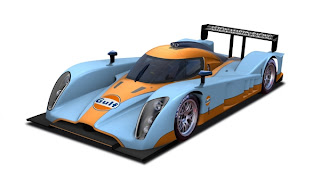 Aston Martin to challenge for overall Le Mans win
Aston Martin to challenge for overall Le Mans winIn conjunction with the 50th anniversary of its only overall win in the Franco Enduro, Aston Martin is set to tackle the 2009 24-hours of Le Mans in this - a pair of Gulf liveried LMP1 race cars.
Racing the cars will be Jan Charouz, Tomas Enge and Stefan Mucke along with Darren Turner who was part of the team that raced the DBR9 GT1 crew in 2007 and 2008. Harold Primat is the newest addition to the team and one other driver will be announced shortly. Unfortunately, Aston won’t be campaigning in the GT1 class in bid to focus all its efforts on its LM
The new car which is based on the 2008 Charouz Racing System Lola will be powered by the same production-based Aston Martin V12 engine which, last year, helped Aston Martin secure its second successive Le Mans GT1 title with the DBR9. It also powered the Charouz car to a new La Sarthe lap record for a petrol car.
Aston Martin Racing is developing the car in conjunction with Lola, Michelin, Koni and BBS and continues its relationship with major partner Gulf Oil and official clothing partner Hackett.
In 2009, the ACO is introducing new regulations aimed at balancing the performance of petrol and diesel engined prototypes making the LMP1 category more appealing and relevant to Aston Martin.
To focus maximum energy on the LMP1 programme, the Works team will not defend its GT1 title at Le Mans. However, Aston Martin Racing will support any of its official partner teams and customers competing at the race.
The Le Mans 24 hour race will be held over the weekend of 13-14 June.
2009 Aston Martin LeMans LMP1 Race Car
 Aston Martin to challenge for overall Le Mans win
Aston Martin to challenge for overall Le Mans winIn conjunction with the 50th anniversary of its only overall win in the Franco Enduro, Aston Martin is set to tackle the 2009 24-hours of Le Mans in this - a pair of Gulf liveried LMP1 race cars.
Racing the cars will be Jan Charouz, Tomas Enge and Stefan Mucke along with Darren Turner who was part of the team that raced the DBR9 GT1 crew in 2007 and 2008. Harold Primat is the newest addition to the team and one other driver will be announced shortly. Unfortunately, Aston won’t be campaigning in the GT1 class in bid to focus all its efforts on its LM
The new car which is based on the 2008 Charouz Racing System Lola will be powered by the same production-based Aston Martin V12 engine which, last year, helped Aston Martin secure its second successive Le Mans GT1 title with the DBR9. It also powered the Charouz car to a new La Sarthe lap record for a petrol car.
Aston Martin Racing is developing the car in conjunction with Lola, Michelin, Koni and BBS and continues its relationship with major partner Gulf Oil and official clothing partner Hackett.
In 2009, the ACO is introducing new regulations aimed at balancing the performance of petrol and diesel engined prototypes making the LMP1 category more appealing and relevant to Aston Martin.
To focus maximum energy on the LMP1 programme, the Works team will not defend its GT1 title at Le Mans. However, Aston Martin Racing will support any of its official partner teams and customers competing at the race.
The Le Mans 24 hour race will be held over the weekend of 13-14 June.
News, Fun, and Obstinance
This video is amazing. It's everything I'd want to ask Melo, plus a bizarre disclosure about what college team he favors—presumably in addition to Syracuse. I think.
Exciting developments on the still-glowing FD book front: In conjunction with Blazer's Edge, I'll be making a Portland appearance next month. All will be one at Burnside Powell's on 2/9 at 7:30, with further festivities to follow. More info here. Also, I'll be in Texas for a week in March. Any interest in an Austin or Dallas "reading"?
Earlier: A major post about everything and questions about our growing influence.
Finally, be prepared for some more ads popping up on the site in the near future. It will interfere with the design as little as possible and make my life easier.
Sunday, January 25, 2009
Ferrari SUV Launching Next Year?

A Ferrari SUV might take some getting used to. The idea to produce SUV actually has been around for some years and this is the freshest artist rendition. It’s an SUV by the definition of a vehicle with four doors, raised ride height, mostly fitted with a 4WD system and takes the shape of a station wagon/ tourer.
Ferrari give codename “Ferrari FS 599 Fuoristrada” .The SUV will be constructed out of aluminium and carbon fiber composites for weight-efficiency. Engines come from the naturally aspirated V8 found in the California and the 599 GTB’s V12 powerplant. They produce in excess of 400hp and 600hp each respectively.
Renderings of a Ferrari SUV have appeared before based on speculation that the Italian company was working on its first ever SUV. At the time Porsche was riding high with the great success of its Cayenne and premium brands like Mercedes-Benz and BMW had been building MLs and X5s for years before.
As the world's economy is still under recession, there’s no clear direction as to whether the project is still going ahead or not. However,with the recent announcement of an alliance with Ferrari parent Fiat and Chrysler LLC of America new possibilities have arisen. Such possibilities include a common SUV platform that can be shared with Jeep, Alfa Romeo and Ferrari itself. Product assembly could even be in the US just like Mercedes with the old ML and BMW with the X5 and X6.
Source:zerotohundred
Ferrari SUV Launching Next Year?

A Ferrari SUV might take some getting used to. The idea to produce SUV actually has been around for some years and this is the freshest artist rendition. It’s an SUV by the definition of a vehicle with four doors, raised ride height, mostly fitted with a 4WD system and takes the shape of a station wagon/ tourer.
Ferrari give codename “Ferrari FS 599 Fuoristrada” .The SUV will be constructed out of aluminium and carbon fiber composites for weight-efficiency. Engines come from the naturally aspirated V8 found in the California and the 599 GTB’s V12 powerplant. They produce in excess of 400hp and 600hp each respectively.
Renderings of a Ferrari SUV have appeared before based on speculation that the Italian company was working on its first ever SUV. At the time Porsche was riding high with the great success of its Cayenne and premium brands like Mercedes-Benz and BMW had been building MLs and X5s for years before.
As the world's economy is still under recession, there’s no clear direction as to whether the project is still going ahead or not. However,with the recent announcement of an alliance with Ferrari parent Fiat and Chrysler LLC of America new possibilities have arisen. Such possibilities include a common SUV platform that can be shared with Jeep, Alfa Romeo and Ferrari itself. Product assembly could even be in the US just like Mercedes with the old ML and BMW with the X5 and X6.
Source:zerotohundred
Saturday, January 24, 2009
Ford announces dual clutch PowerShift gearbox
 Ford Motor Company announced today it will introduce an advanced dual-clutch PowerShift six-speed transmission in North America in 2010 for the small-car segment.
Ford Motor Company announced today it will introduce an advanced dual-clutch PowerShift six-speed transmission in North America in 2010 for the small-car segment.The new gearbox will deliver the fuel efficiency of a manual gearbox with the convenience and ease of a premium automatic transmission,making it a key enabling technology as Ford targets best-in-class or among-the-best fuel economy with every new vehicle it introduces in North America.
Overall, Six-speed transmissions already have helped vehicles such as the 2010 Ford Fusion achieve best-in-class fuel economy, while at the same time allowing the Ford Flex and Ford Escape to achieve unsurpassed fuel economy in their respective segments.
 Ford is leveraging six-speed transmissions, advanced internal combustion engines such as EcoBoost, hybrids, full electric vehicles, vehicle weight reduction and electric power-assisted steering to improve fuel economy and reduce greenhouse gas emissions fleet-wide by 30 percent by the year 2020.
Ford is leveraging six-speed transmissions, advanced internal combustion engines such as EcoBoost, hybrids, full electric vehicles, vehicle weight reduction and electric power-assisted steering to improve fuel economy and reduce greenhouse gas emissions fleet-wide by 30 percent by the year 2020.Compared to traditional automatic four-speed transmissions, PowerShift can help reduce fuel consumption by up to 9 percent depending on the application.
PowerShift provides the full comfort of an automatic with a more sophisticated driving dynamic, thanks to uninterrupted torque from the dual-clutch technology, which consists essentially of two manual transmissions working in parallel, each with its own independent clutch unit. One clutch carries the uneven gears – 1, 3 and 5 – while the other the even gears – 2, 4 and 6. Subsequent gear changes are coordinated between both clutches as they engage and disengage for a seamless delivery of torque to the wheels.
 PowerShift, unlike conventional automatic transmissions, does not need the heavier torque converter or planetary gears. In addition, the dry-clutch derivative eliminates the need for the weighty pumps, hydraulic fluids, cooling lines and external coolers that wet clutch transmissions require. As a result, the dry-clutch PowerShift transmission can weigh nearly 30 pounds less than, for example, the four-speed automatic transmission featured on today's Ford Focus.
PowerShift, unlike conventional automatic transmissions, does not need the heavier torque converter or planetary gears. In addition, the dry-clutch derivative eliminates the need for the weighty pumps, hydraulic fluids, cooling lines and external coolers that wet clutch transmissions require. As a result, the dry-clutch PowerShift transmission can weigh nearly 30 pounds less than, for example, the four-speed automatic transmission featured on today's Ford Focus.Differentiating PowerShift even further in terms of its customer appeal is its shift quality, launch feel and overall drive dynamic, which are all facilitated by an expert blend of Ford-exclusive electro-mechanical systems, software features, calibrations and controls. These unique driving features include:
• Neutral coast down – The clutches will disengage when the brakes are applied, improving coasting downshifts and clutch robustness as well as reducing parasitic losses for increased fuel economy.
• Precise clutch control in the form of a clutch slip to provide torsional damping of the engine vibration – This function improves noise, vibration and harshness (NVH) at low engine speeds and enables lower lugging limits for improved fuel economy.
• Low-speed driving or creep mode with integrated brake pressure – This function simulates the low-speed control drivers are accustomed to from an automatic transmission. The amount of rolling torque in Drive and Reverse is precisely controlled, gradually building as brake pressure is released.
• Hill mode or launch assist – Prevents a vehicle from rolling back on a grade by maintaining brake pressure until the engine delivers enough torque to move the vehicle up the hill, providing improved driver confidence, comfort, safety and clutch robustness.
source:ford
Ford announces dual clutch PowerShift gearbox
 Ford Motor Company announced today it will introduce an advanced dual-clutch PowerShift six-speed transmission in North America in 2010 for the small-car segment.
Ford Motor Company announced today it will introduce an advanced dual-clutch PowerShift six-speed transmission in North America in 2010 for the small-car segment.The new gearbox will deliver the fuel efficiency of a manual gearbox with the convenience and ease of a premium automatic transmission,making it a key enabling technology as Ford targets best-in-class or among-the-best fuel economy with every new vehicle it introduces in North America.
Overall, Six-speed transmissions already have helped vehicles such as the 2010 Ford Fusion achieve best-in-class fuel economy, while at the same time allowing the Ford Flex and Ford Escape to achieve unsurpassed fuel economy in their respective segments.
 Ford is leveraging six-speed transmissions, advanced internal combustion engines such as EcoBoost, hybrids, full electric vehicles, vehicle weight reduction and electric power-assisted steering to improve fuel economy and reduce greenhouse gas emissions fleet-wide by 30 percent by the year 2020.
Ford is leveraging six-speed transmissions, advanced internal combustion engines such as EcoBoost, hybrids, full electric vehicles, vehicle weight reduction and electric power-assisted steering to improve fuel economy and reduce greenhouse gas emissions fleet-wide by 30 percent by the year 2020.Compared to traditional automatic four-speed transmissions, PowerShift can help reduce fuel consumption by up to 9 percent depending on the application.
PowerShift provides the full comfort of an automatic with a more sophisticated driving dynamic, thanks to uninterrupted torque from the dual-clutch technology, which consists essentially of two manual transmissions working in parallel, each with its own independent clutch unit. One clutch carries the uneven gears – 1, 3 and 5 – while the other the even gears – 2, 4 and 6. Subsequent gear changes are coordinated between both clutches as they engage and disengage for a seamless delivery of torque to the wheels.
 PowerShift, unlike conventional automatic transmissions, does not need the heavier torque converter or planetary gears. In addition, the dry-clutch derivative eliminates the need for the weighty pumps, hydraulic fluids, cooling lines and external coolers that wet clutch transmissions require. As a result, the dry-clutch PowerShift transmission can weigh nearly 30 pounds less than, for example, the four-speed automatic transmission featured on today's Ford Focus.
PowerShift, unlike conventional automatic transmissions, does not need the heavier torque converter or planetary gears. In addition, the dry-clutch derivative eliminates the need for the weighty pumps, hydraulic fluids, cooling lines and external coolers that wet clutch transmissions require. As a result, the dry-clutch PowerShift transmission can weigh nearly 30 pounds less than, for example, the four-speed automatic transmission featured on today's Ford Focus.Differentiating PowerShift even further in terms of its customer appeal is its shift quality, launch feel and overall drive dynamic, which are all facilitated by an expert blend of Ford-exclusive electro-mechanical systems, software features, calibrations and controls. These unique driving features include:
• Neutral coast down – The clutches will disengage when the brakes are applied, improving coasting downshifts and clutch robustness as well as reducing parasitic losses for increased fuel economy.
• Precise clutch control in the form of a clutch slip to provide torsional damping of the engine vibration – This function improves noise, vibration and harshness (NVH) at low engine speeds and enables lower lugging limits for improved fuel economy.
• Low-speed driving or creep mode with integrated brake pressure – This function simulates the low-speed control drivers are accustomed to from an automatic transmission. The amount of rolling torque in Drive and Reverse is precisely controlled, gradually building as brake pressure is released.
• Hill mode or launch assist – Prevents a vehicle from rolling back on a grade by maintaining brake pressure until the engine delivers enough torque to move the vehicle up the hill, providing improved driver confidence, comfort, safety and clutch robustness.
source:ford
An Unofficial Guide to Guides
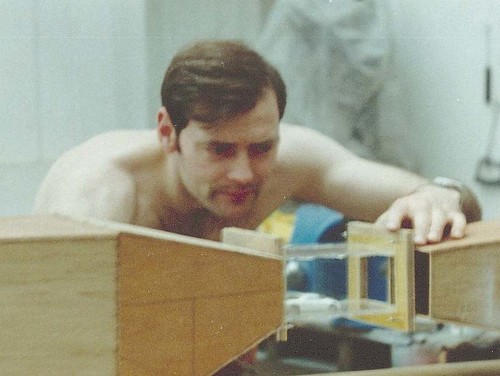
This began as a post about how awesome I was for making a point of watching Cavs/Warriors, and the difficulty of figuring out what to view on any given night. Then I realized that it didn't take a genius to pick that game, so instead I'm going to write about what I learned from Monta Ellis. But first, a few words about the Nuggets.
I always thought that Melo was the force that somehow legitimated Iverson, and all the other miscreants on that squad. That might have been wishful thinking, or aiming too low.
Reader Dave F. recently asked me whether it's possible for a team to made more FD by a decidedly un-FD player, a more traditional guy who serves as the organizing principle. He mentioned Yao, and it's true, under Adelman Yao has at times shown himself capable of both taking part in a more complex offense and holding down the paint. The real test case, though, is Billups. We all know Chauncey used to be a hoot when on Minnesota, and isn't exactly the purest point in the galaxy. But his sense of economy and control do have a conservative streak to them; Nash, Paul, Rose, or Baron are more creative and unpredictable, even if they're closer to the positional archetype. In fact, you could that the ideal PG is supposed to introduce an element of instability to throw off opponents, while themselves maintaining a new-found grasp of this discovery. It's a dualism that explains why today, the league's premier playmakers often find themselves on fast, inventive team—and why all my favorite teams have, or badly need, such a player.

Billups, then, is neither too much nor too little of a point guard, and as such is the perfect equilibrium for a Denver team made up of various forms of excess and lack. His job isn't to encourage K-Mart, J.R., and Nene, but in effect, manage them. Neither dashing "floor general" nor feckless "game manager," Billups is entrusted with turning craziness into a useful commodity, ordering and meting it out so that players are compartmentalized without being squelched. Maybe that makes him a lion-tamer, or the guy in charge of The Wild Bunch. Denver may not have the least conventional roster in the league, but it's certainly the most streaky and combustible. Billups can juggle these pieces (one of which is George Karl, natch) through a combination of equanimity and pragmatism. I will punch you if anyone makes an Obama analogy here.
This isn't as simple as saying "Chauncey Billups runs the offense." He's the star in the middle of the solar system that holds everything else in its stable orbit. And here, we stumble into quite the equivocation, since by conventional measure, Melo is the "star" of that team, and Billups's predecessor, AI, certainly had more star power. But taken literally, the primary function of a star is to provide gravity, cohesion. That can be in the form of leadership, or the more concrete work of Billups I've described. I would say that Iverson was always a bigger star league-wide during his time on Denver than he was on his own team. This might be where stardom ceases to be frivolous, and begins to overlap with terms like "value," and the debates everyone's been having about what makes an All-Star. I think it goes without saying, though, that Billups seems more impressive in this capacity, harnessing the forces of darkness, than at any point in his storied Detroit career. Denver needs him to make sense, but he needs Denver to exhibit just compatible, and essential, he can be to a team.
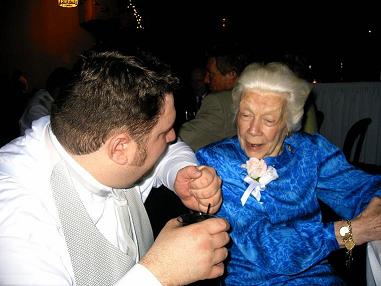
That's because the Pistons were, depending on how you look at it, starless—big planets all floating in a row—or a team of minor stars who didn't care for stragglers. I'm not offering a critique of how Detroit played, more that attitude that earned them so much praise, and yet some always hankering to see them add an uber-component. For instance, as much as I loved this year's Warriors as a scraggly band of freedom fighters hanging out in Oakland and giving other teams nightmares whose ultimate result was mere annoyance, they were most definitely starless, even if Jackson, Crawford and Maggette are prone to the kind of play (and numbers) associated with taking charge and holding things together. I've always found it admirable that Jackson, despite being the captain and arguably that team's Shawn Marion (wholly original piece that dictates the overall structure, even as the PG shapes it from second-to-second), never seemed particularly interested in stardom. Say what you will about S-Jax, but the man is smart about basketball, right down to the way he balances the ethic that made him beloved as a Spur with the inner crazy encouraged by Nellie ball.
And so we finally arrive at Monta's return. That the first game of the year for a player with one good season under his belt, who might be the best player on one of the league's worst teams, seemed like an event should tell you something about Ellis. Well, adjust that for my personal biases, but certainly Ellis has the capacity to captivate and punctuate like no one else on the Warriors. Basketball-wise, Monta's just adding another scorer whose can handle the ball a little. He's not that much better than Crawford. But when he's on the floor with the Warriors, that team suddenly has a sense of purpose. He's not hands-on like Billups, nor is he as vocal as Jackson. And yet all of a sudden, the Warriors have an identity. They're no longer a subversive mess, as likely to undo themselves as to irritate others. They're that same rag-tag people's army, but with a charismatic punch that allows them to believe in themselves. It's a swag-laden way of leading by example. Call it the reverse Ewing theory—a team lacking inner logic for whom a seemingly pointless star is the only way to justify themselves. It's also the best possible explanation for why the Wizards need Arenas, and maybe why the Warriors pursued him this off-season.

Rather than write an actual conclusion—no way it needs to get any more abstract and high-flown—I'd like to say a few words about the Oklahoma City Thunder. I know that as a resident of Seattle, I should hate this team. Then again, I refuse to hate David Stern, who is far more to blame than, say, Kevin Durant. But along with Denver, LeBron with a healthy team, and presumably now Golden State, they're one of the only squads I can now reliably count on to be entertaining. Yes, Durant's maturation, Westbrook's crash-and-burn progress, and Jeff Green Jeff Green-ing his way to Jeff Green-ness are all rad. However, it's the packaging, the location, and the irrepressible obscurity around them that makes them so compelling. This is an NBA team that, for all intents and purposes, might as well not exist. They play in a city that matters only to the people who live there. Their uniforms are unrelentingly generic, like the plain white can, black type BEER they sell some places. The name of the team seems like a placeholder, unless you bother to acquaint yourself with life in Oklahoma. I kind of admire Clay Bennett for crafting such an utterly blank brand, so strong is his faith in OKC's appetite for NBA ball, plain and simple.
The more this team grows, the more all this seems mysterious, sneaky, or hermetic, rather than simply laughable. When I sleep, I dream of makng a shirt that puts Durant on the cover of Everybody Knows This is Nowhere, and I even think the music serves as a decent soundtrack. By contrast, Hawks/Bobcats were red carpet regulars. This team is living in caves, stockpiling arms, camping out on the Big Love compound. I don't know what their purpose is, but the bare bones image and total lack of exposure makes them seem so much more severe, even unsettling, than if they had a cartoon horse on their unis. Durant's good enough now to reclaim that "assassin" epithet; on this team, it's as haunting as it should be. They may practice an hour's drive from any number of campy militias, but mark my words, the Thunder will be the first NBA team to catch on with Waziristan hobbyists.

Friday, January 23, 2009
Porsche 2009 GT3 RSR

Porsche recently unveiled its latest GT2-class racing car, the GT3 RSR.
The GT3 RSR is powered by a rear mounted six cylinder engine with displacement now up to 4-liters to the 3.8-liter of last year. What is baffling is that last years car produced 465hp@8000 rpm but this years car puts out 450hp@7,800rpm, the difference is not much and it could be down to sacrificing power for reliability. Torque is the same as last year at 430Nm@7,250rpm.
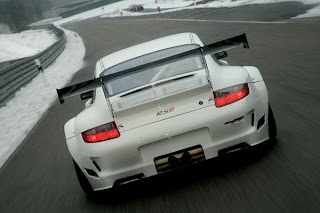

The rev limiter kicks in at 9000, and Porsche says that the new car’s torque curve is better-optimized than the outgoing car’s.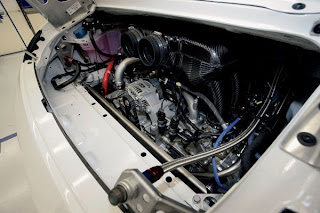
Technical Description Porsche GT3 RS
Engine:
Water-cooled, six-cylinder boxer engine; four valves
per cylinder; dry sump lubrication; individual throttle
butterflies; fuel injection; air restrictors 2 x 29.5 mm.
Bore:
102.7 mm
Stroke:
80.4 mm
Capacity:
3,996 cc
Power output:
331 kW (450 bhp) at 7,800 rpm
Max. Torque:
430 Nm at 7,250 rpm
Max. revs:
9,400 rpm
Transmission:
Six speed gearbox with sequential jaw-type shift;
oil/water heat exchanger; single-mass flywheel;
hydraulic disengagement lever; three-plate carbon-fibre
clutch; rear wheel drive; limited-slip differential 45/65%.
Body:
Monocoque body (basis GT3 RS) of hot-galvanised steel;
aerodynamically optimised front end with front spoiler;
aerodynamically optimised front underfloor; adjustable
rear wing; 90-litre safety fuel tank with fast filling function;
air jack; welded-in safety cage; bucket-type racing seat
(on driver’s side only) with flame-resistant seat cover;
six-point seat belt adapted for use of the HANS
Head and Neck Support; electric fire-extinguishing system.
Suspension:
Front:
McPherson spring strut axle; Sachs four-way gas
pressure dampers; double coil springs (main and ancillary
spring); front axle arms adjustable for camber; adjustable
sword-type anti-roll bar on both sides; power steering.
Rear:
Multi-arm axle with rigidly mounted axle sub-frame;
Sachs four-way gas pressure dampers; double coil springs
(main and auxiliary spring); rear axle tie-bar reinforced
and infinitely adjustable; adjustable sword-type anti-roll
bar on both sides.
Complete suspension infinitely adjustable (height,
camber, track).
Brakes:
Brake system with balance bar control.
Front:
Single-piece six-piston aluminium fixed callipers;
inner-vented, 380 mm in diameter; racing brake pads.
Rear: Single-piece four-piston aluminium fixed callipers;
inner-vented, 355 mm in diameter; racing brake pads.
Wheels:
Front:
Three-piece BBS light-alloy wheels (11J x 18-34);
central bolt;
Rear:
Three-piece BBS light-alloy wheels (13J x 18-12.5);
central bolt.
Electrical System:
Motec display with integrated data recording; multi-function
display with integrated gearshift indicator; adjustable
traction control; battery: 12 volt, 50 Ah, 140 Ah alternator.
Weight:
Approx. 1,220 kg complying with A.C.O. regulations,
1,245 kg complying with FIA regulations.

